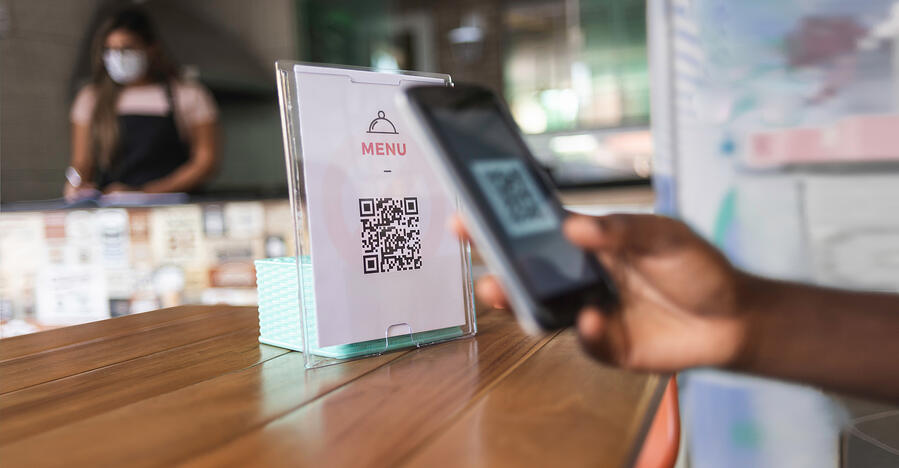
2021-05-18 15:00:00 Author: blog.avast.com(查看原文) 阅读量:152 收藏
Everything changed for QR codes when Covid-19 shut down the restaurant industry in early 2020
QR codes are suddenly everywhere. Restaurant menus. Device installs. Jewelry packaging. But while they’re popping up faster than TikTok trends, it might surprise you to learn that they were actually created in 1994, which makes them almost the same age as the world wide web. So they’re actually pretty old, in tech time — but they’re only just now becoming relevant to the everyday consumer. What’s that about? Quick response (QR) codes were invented at Japanese automotive company Denso Wave. The goal was to make auto part scanning easier and more efficient with a new barcode that could hold more information than the traditional rectangular one. The black and white design is based on the popular board game Go and one QR code can hold exponentially more information than a traditional barcode. But adoption of QR codes outside of manufacturing was slow, mainly because we didn’t have the consumer tech to utilize them. Remember: Just like a barcode, a QR code requires a special scanner. And who has one of those in their home? Well, after 2007, nearly everyone does. The first iPhone was released that year and I don’t have to tell you how successful it was. You still needed a special app to scan QR codes, but it only took a few years before they were all over the place. You’d see them on the doors of convenience stores, on business cards, on some forms of currency — I even saw a giant one sail by on the side of a public bus. And, to some degree, they caught the attention of the public: 14 million Americans with smartphones scanned a QR code or barcode in 2011. But they just…didn’t work. They were positioned in weird places. They required their own software to even access. They led to weird links. And they were, frankly, ugly. They were a silly gimmick; nothing more than a marketing ploy for companies or individuals who wanted to seem up on the latest trends. By 2013, the world was so saturated with useless QR codes that they were widely derided. (Case in point: a book was released called QR Codes Kill Kittens: How to Alienate Customers, Dishearten Employees, and Drive Your Business into the Ground.) Like a catchy Top 40 song, QR codes were played out. The next big moment for QR codes was in September 2017, when Apple released iOS 11. Included in the new operating system was the ability to scan QR codes from the native camera app. It might seem like a relatively small change, but this update took away the final technological impediment to broader QR code adoption and acceptance. And yet, QR codes still didn’t take off. Maybe the bad taste of the first QR code craze was still lingering in the mouths of marketing teams and technophiles. In a world that moves as quickly as the world of consumer technology does, no one wants to seem passé. And QR codes were definitively not cool. Everything changed when the Covid-19 pandemic shut down the restaurant industry in early 2020. In order to reopen — and to help customers feel safe — restaurants got rid of handheld menus (which were difficult or even impossible to sanitize) and quickly threw up QR codes that linked to online menus. By June 2020, QR codes had become widely used and accepted in the restaurant industry. Just three months later, in September 2020, the payment processing company Square launched a fully integrated QR code system for restaurants. With one code, customers can now pull up a menu, order, and pay. The product makes QR code implementation much easier for non-technical restaurant owners and potential Covid exposure to be reduced along every step of the way. And that’s when I — and you, and your mom, and your cousin, and your grandpa — started noticing QR codes everywhere. As we all emerged from our pandemic-imposed hibernation and into the light of hastily constructed outdoor seating areas, we suddenly had to scan to know what was on the menu. My partner and I, after a couple of times dining out, joked about it like the nerds that we are. The QR code, it seems, is finally relevant. But while it took an airborne virus to get us all finally using QR codes (although, to be fair, they’re much more popular in China), it’s important to be aware of digitally-borne viruses when you’re using them. Because QR codes are now easy to create and to place, they could be infected with malware. And, according to Avast Senior Global Threat Communications Manager Christopher Budd, you should never click on anything when you can’t tell where it’s going to take you. “The biggest thing with something like a QR code is that it runs counter to what we tell people all the time, which is don’t click on links. Navigate to the URL yourself,” Budd says. "But QR codes take you directly to a specific page that you’d have to spend 10 minutes trying to find by typing manually. We get it you’re going to do it, because you don’t want to — or can’t — spend 15 minutes navigating to a buried site.” Best practice, then, is to take the second to click on the little lock icon that pops up and check the certificate. Make sure that it’s actually directing you to the site you want to go to. And, Budd says, if something unexpected happens — like a download, for example — stop the download and close it immediately. It took a global pandemic to finally make the QR code relevant to the everyday user. But while it remains to be seen if they stick around after the world reopens, keep an eye on the next tech trend people make fun of.
如有侵权请联系:admin#unsafe.sh
.png)